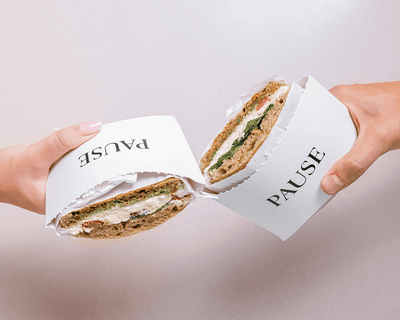RAW MILK
Milk that has not been heat treated or pasteurised. It has all its natural bacteriological and enzymatic characteristics. Raw milk is not the same thing as unpasteurised milk – while all raw milk is unpasteurised, not all unpasteurised milk is raw. Milk heated to greater than 40c is no longer considered raw milk.
PASTEURISED
Milk that has been heated to a particular temperature, for a specific time, in order to kill viruses and bacteria. While pasteurisation insures the destruction of milk pathogens, it also strips the milk of beneficial and innocuous natural flora. There are two legal standards for pasteurisation:
- Low Temperature/Long time – holding milk at 63c for 30 mins. This results in fewer chemical modifications of milk.
- High Temperature/Short time – holding milk at 72c for 15 seconds. Results in high microbial destruction but also highly modifies the chemical qualities of the milk, including loss of calcium and the precipitation of whey proteins.
THERMISED
Thermisation of milk is a ‘heat treatment not equivalent to pasteurisation’. There is no legal definition nor criteria for thermisation. Practically, thermised milk has been heated between 58-62C for a minimum of 15 seconds. This decreases the milk’s total bacterial count, but does not alter the milk’s chemical status.
STARTER
A preparation of bacteria that, when added to milk, consumes lactose and produces lactic acid. The resulting acidification is one of the preserving techniques used in cheese making.
RENNET
A coagulant used in cheese making. The active agent in rennet is an enzyme called chymosin. Traditionally chymosin would be extracted from the fourth stomach (abomasum) of a calf, kid or lamb. Popular today are vegetarian coagulants that contain chymosin that has been generated by adapting yeast or mould cultures.
JUNKET
The initial curd formed after the addition of rennet. Junket is synonymous with curd.
CUTTING
Cutting the junket. Cutting the junket helps to release whey. The smaller the curd is cut the more whey is released. The more whey that is released the longer the cheese will keep.
CURD
A coagulation of milk protein. In cheese making the curd, created under the influence of rennet, is like a sponge holding whey, fat, other milk solids and a rich abundance of acidifying and flavour-producing bacteria.
COAGULATE
To cause a fluid to change to a solid or semi-solid state.
WHEY
The liquid held within the curd. Whey contains water and a variety of proteins that do not clot in the presence of chymosin. Whey cheeses, like Ricotta, form a curd primarily under the influence of heat. The fat in whey can be separated to make butter. Whey is also used as feed. Often considered a wasted/useless by-product. It is big business in America.
WASHING THE CURD
Replacing a measure (often a third) of whey from the vat with water. Washing helps to control acidity growth by reducing the amount of lactose and bacteria. Cheeses with a rubbery texture are often washed curd cheeses.
LADLING
Transferring the cut curd directly into moulds by the use of a ladle or pan. Some mould-ripened cheeses, like Stilton and Camembert, are handladled in this way.
SCALDING
A heat treatment of curd. The primary function of the scald is to shrink the curd and expel moisture. The scald temperature for the major British hard cheeses is the highest temperature reached during cheese making. For Cheshire, the temperature is increased gradually (one degree Fahrenheit every five minutes) until the maximum temperature range of 88 to 92 degrees F is reached. For Cheddar, maximum scald temperature is closer to 104 – 107 degrees F.
COOKING
A heat treatment of curd. The primary function of cooking is to shrink the curd and expel moisture. Cooking reaches a higher temperature than scalding and is often associated with the larger mainland European cheeses.
PITCHING
The settling of curd particles in the bottom of the vat after scalding. During the scald the curd is constantly stirred to ensure even temperature distribution within the vat. To ‘pitch’ the curd the stirring stops and the curd particles are allowed to settle to the bottom of the vat. When pitching is complete the whey is drained off.
CHEDDARING
The stacking and turning of curd blocks. This technique applies specifically to Cheddar making. When the whey has drained from the vat the remaining curd mass is cut into blocks leaving a drainage channel down the centre. These blocks are then turned over. After 10 – 15 minutes the blocks are piled one on the other. The process is repeated inverting the blocks in the vat. The weight of the curd helps to squeeze out moisture and develop a ‘chicken breast’ texture (the ideal Cheddar curd texture).
SALTING
Adding salt to the curd. Salting helps to draw off moisture and arrest the growth of bacteria and thus retard acidity development. Salting is usually done in one of three ways: 1). By sprinkling salt directly onto the curd in the vat. 2). By placing the freshly formed cheese into a salted water (brine) bath. 3). By rubbing salt into the skin of a newly made cheese.
MILLING
The mechanical reduction of the salted curd into shards ready for moulding.
PRESSING
The application of pressure to drive out moisture and fuse the milled curd together. The pressing procedure differs between cheeses. For a clothbound cheese, like Appleby’s Cheshire, the milled curd is put into a mould and pressed for 15 minutes before being turned out into a coarse cloth, returned to the mould and left overnight to drain. The coarse cloth will be replaced by a smooth one the next day and the cheese returned to the press where the pressure will increase throughout the day. The following day the cloth is removed and the finished calico bandage applied.
DRYING
Dehydration of the cheese surface to help form a rind. This is a crucial part in the manufacture of a mould-ripened cheese like Camembert. Inadequate drying can lead to excessive mould growth and a quicker breakdown of the curd than desired.
MATURING
The controlled storage of cheese. Different cheeses require different temperature and humidity ranges to mature to their optimum. Typically, hard cheeses of most types will mature well in a temperature range of between 53.6 – 57.2 degrees F and a humidity band between 85 and 90%.
RIND
The hard edge of the outside of the cheese. The rind may be influence by the cloth binding of the cheese, or it may made of other materials which are inedible (e.g plasticote, a food grade quality plastic). The rind may also be a natural rind, such as a bloomy rind (where moulds are allowed to grow organically on the cheese), or a washed rind (where moulds are prevented from growing on the outside of cheese by washing the cheese in brine, or brushing it with a salt solution).
FRIABLE
A texture descriptor. Easily crumbled.
PLIANT
A texture descriptor. Easily bent.
CRUMBLY
A texture descriptor. Describes consistencies which are comprised of or easily break into small fragments.
UPFRONT
A taste descriptor. Flavours are full and immediate.
MELLOW
A taste descriptor. Flavours of medium intensity, which are free from harshness.
SAVOURY
A taste descriptor. Flavours which are salty rather than sweet.
LACTIC
A taste descriptor. Lactic flavours have high acidity. e.g. cheeses such as Innes Log or Sinodun Hill.
BUTTERY
A texture and flavour descriptor. Indicating that either texture or flavour resemble butter.
CREAMY
A texture and a flavour descriptor. Can denote both oozing, runny textures, and fresh cream flavours.
EARTHY
A taste descriptor. This term often describes flavours on the rind, influenced by how the cheese is matured and reflecting these conditions, eg. of the cellar. Another word used to describe such flavours is mineral which denotes cool, springwater like or stony aromas.
FRUITY
A taste descriptor. Denotes sweetness and acidity comparable to fresh or dried fruit.
FLORAL
A taste descriptor. Reminiscent of wild flowers, herbs, grasses, spices.
WOODY
A taste descriptor. Cheeses bound with wood which imparts a woody flavour.
BISCUITY
A taste descriptor. Flavours similar to buttery biscuits, such as oatcakes, digestives, shortbread.
PEPPERY
A taste descriptor. Flavours of black and white pepper, indicating some heat.
MEATY
Denotes flavours of cooked or cured meats.
ROBUST
A taste descriptor. Upfront, full and strong flavours that are lasting.
SWEET
A taste descriptor. Sweet flavours are often detected in aged cheeses as well as in sheep’s milk cheeses. Sweet flavours can range from warm or cooked milk (caramel), to sweet fresh fruits (peachy).
MALTY
A taste descriptor. Flavours similar to cereals such as Shreddies or Horlicks.
TANGY
A taste descriptor that indicates a mouth-watering acidity. Can describe flavours that are vinegary or citrussy in flavour.
FARMYARD
A taste descriptor. Flavours and aromas reminiscent of animals on a farmyard.
FLUFFY
A texture descriptor. Indicates curds being light. Examples of such a texture would be Sleightlett, Sinodun Hill or St Tola.
BRIGHT
A flavour descriptor. Indicates clean, clear acidity.
VEGETAL
A flavour descriptor. Flavours reminiscent of cooked or canned vegetables such as broccoli, brassicas, etc.
LONG
A flavour descriptor describing tastes which remain on your palette for a long time after you’ve eaten the cheese.









